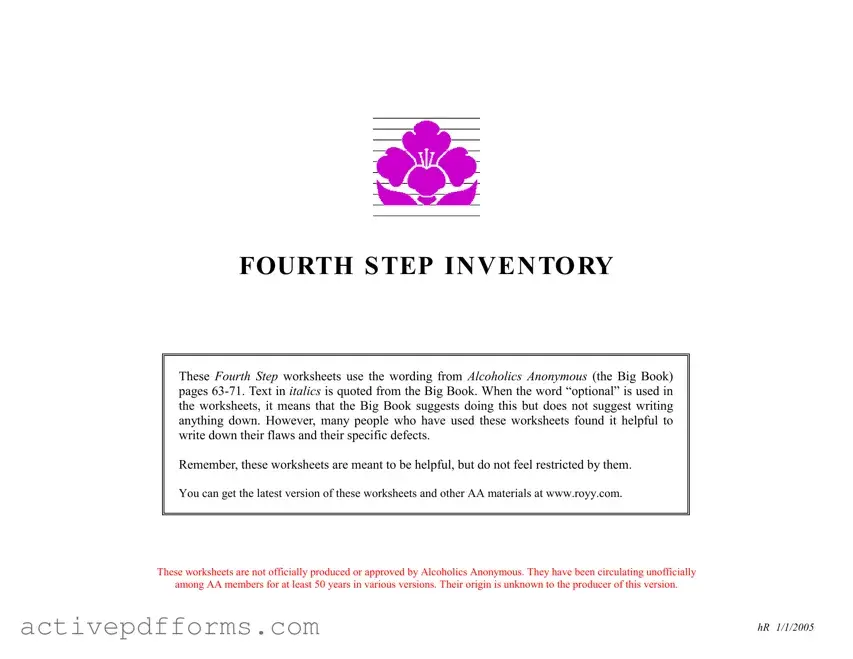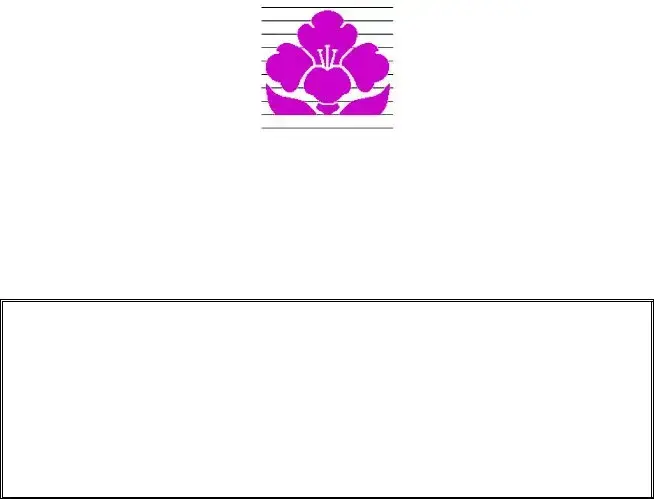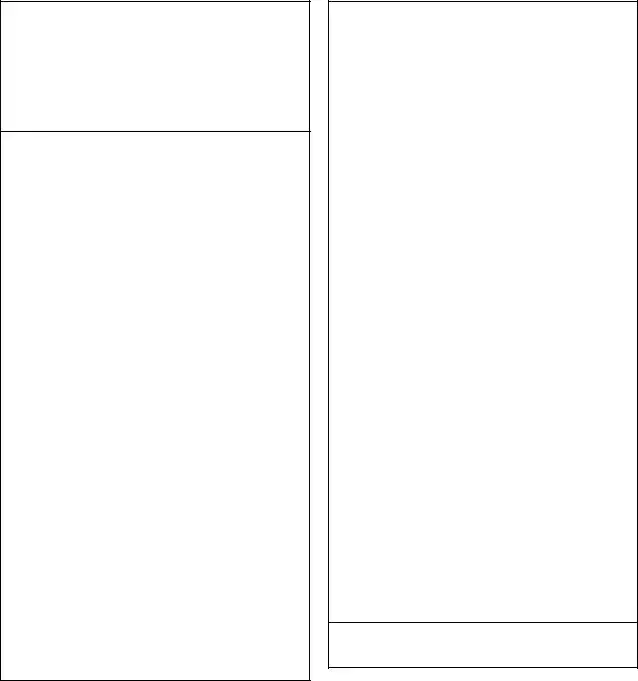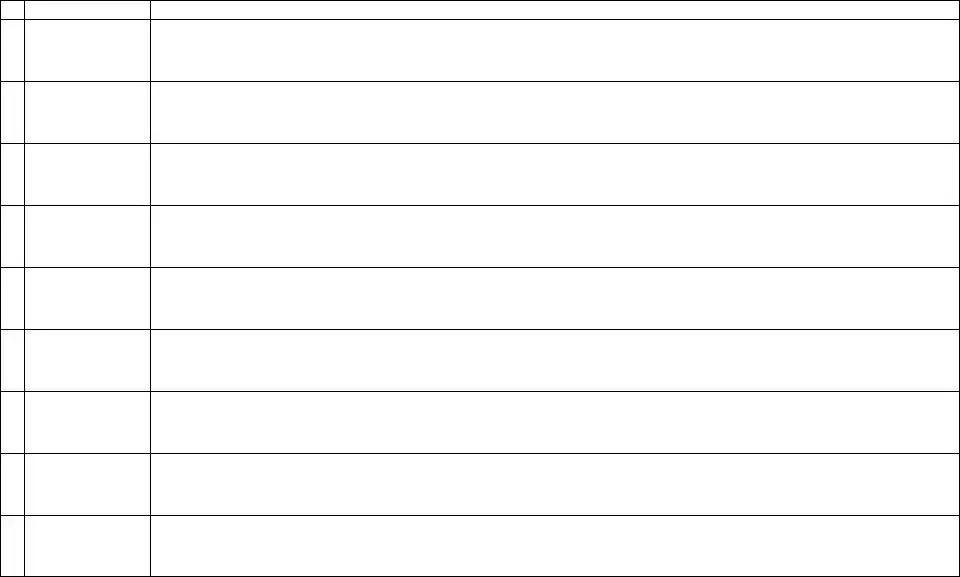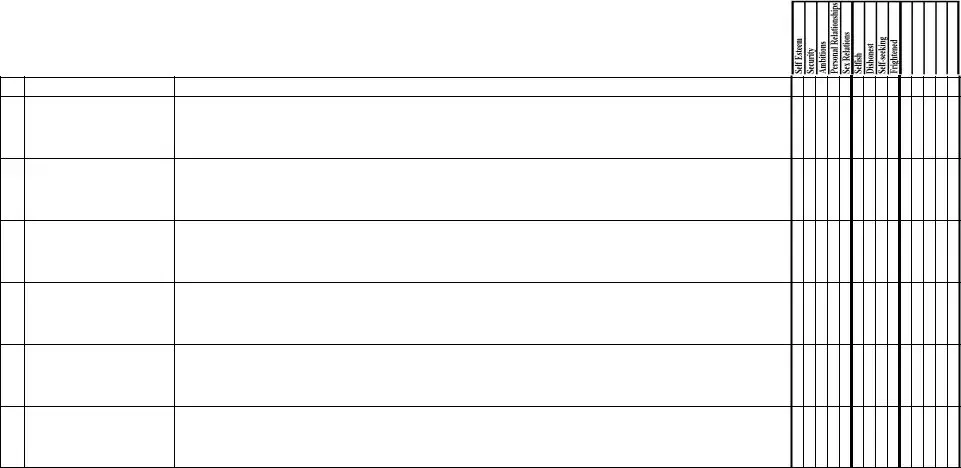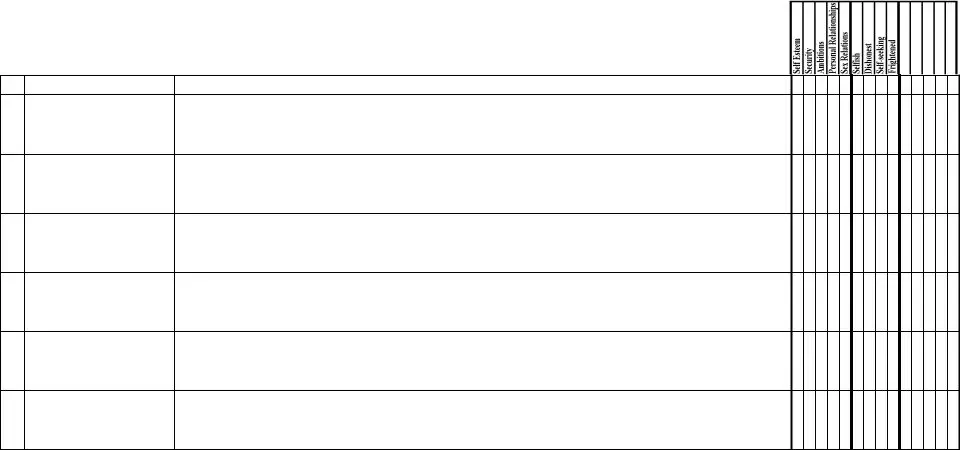Step Four Resentments Checklist Column 4*
“Putting out of our minds the wrongs others had done, we resolutely looked for our own mistakes. Where had we been selfish, dishonest, self-seeking and frightened?”
SELFISH
•Not seeing others point of view, problems or needs
•Wanting things my way
•Wanting special treatment
•Wanting others to meet my needs– dependence
•Wanting what others have
•Wanting to control–dominance
•Thinking I'm better–grandiosity
•Wanting to be the best
•Thinking others are jealous
•Wanting others to be like me
•Being miserly, possessive
•Wanting more than my share
•Reacting from self loathing, self righteousness
•Too concerned about me
•Not trying to be a friend
•Wanting to look good or be liked
•Concerned only with my needs
DISHONEST
•Not seeing or admitting where I was at fault
•Having a superior attitude–thinking I'm better
•Blaming others for my problems
•Not admitting I've done the same thing
•Not expressing feelings or ideas
•Not being clear about motives
•Lying, cheating, stealing
•Hiding reality–not facing facts
•Stubbornly holding on to inaccurate beliefs
•Breaking rules
•Lying to myself
•Exaggerating, minimalizing
•Setting myself up to be “wronged”
•Expecting others to be what they are not
•Being perfectionistic
SELF SEEKING
•Manipulating others to do my will
•Putting others down internally or externally to build me up
•Engaging in character assassination
•Acting superior
•Acting to fill a void
•Engaging in gluttony or lusting at the expense of another person
•Ignoring others’ needs
•Trying to control others
•Getting revenge when I don't get what I want
•Holding a resentment
•Acting to make me feel good
FRIGHTENED (OF)
•Peoples' opinions
•Rejection, abandonment
•Loneliness
•Physical injury, abuse
•Not being able to control or change someone
•My inferiority, inadequacy
•Criticism
•Expressing ideas or feelings
•Getting trapped
•Expo sure, embarrassment
_______________
*Thanks to Anonymous in New England.
